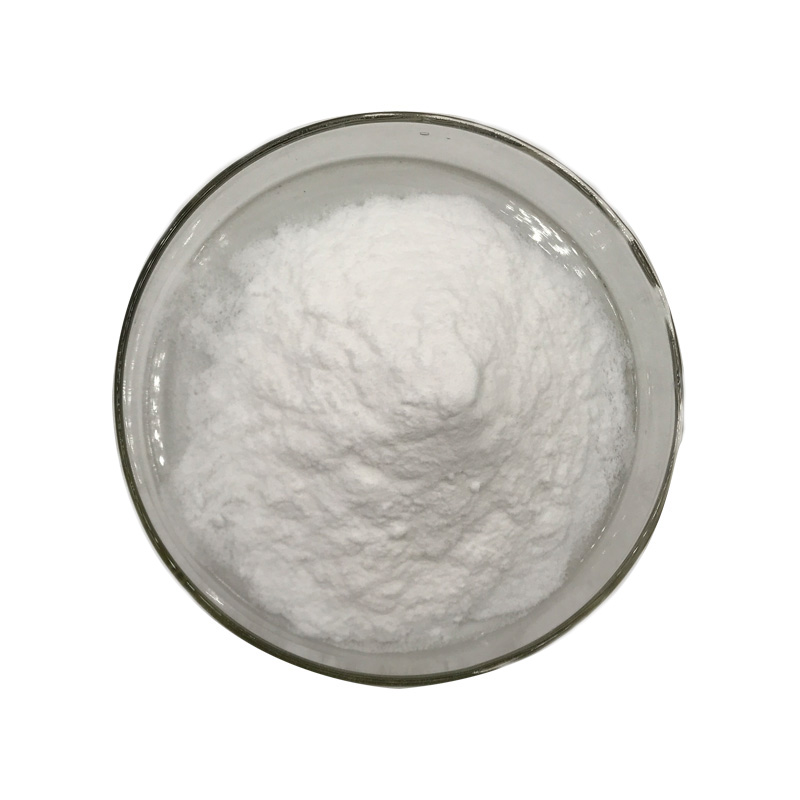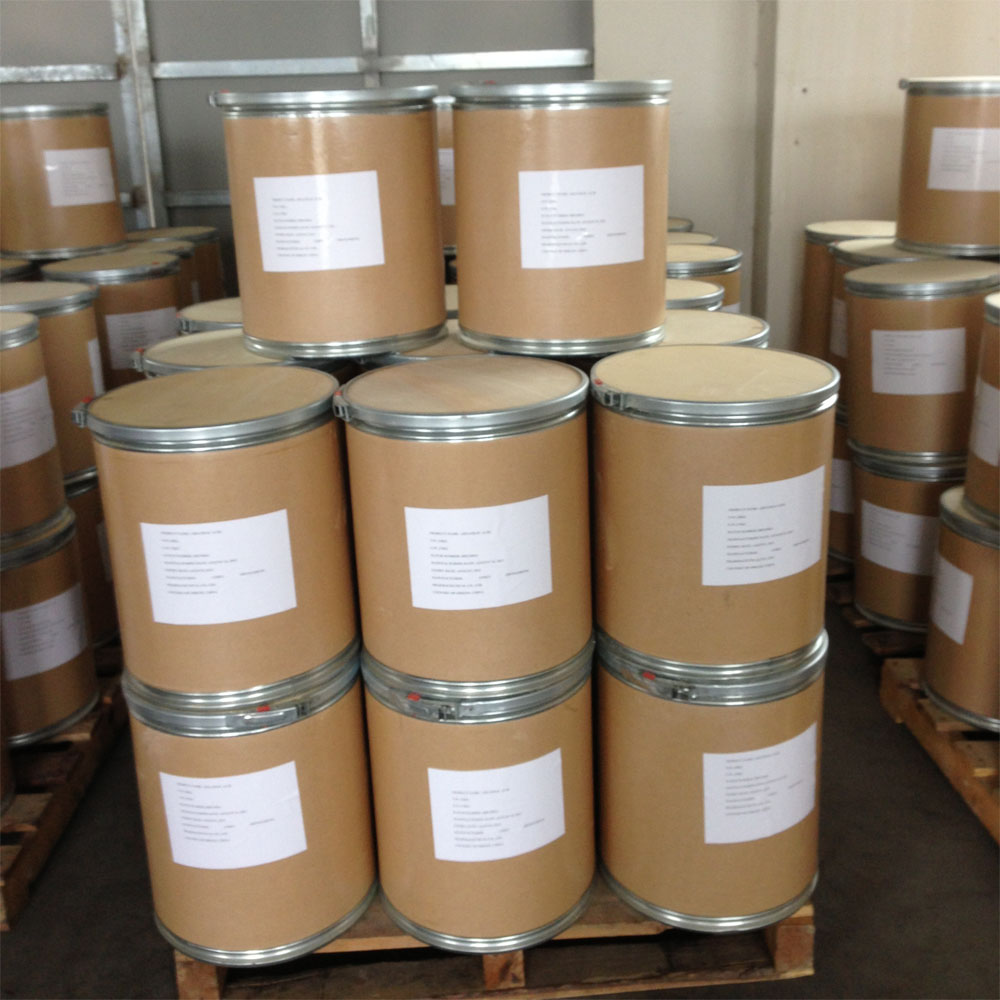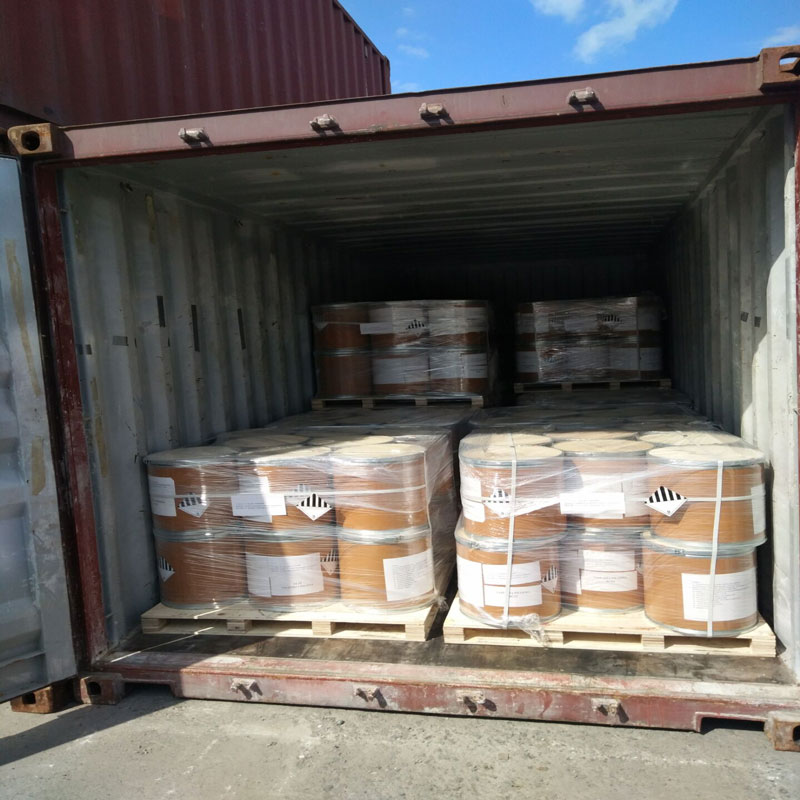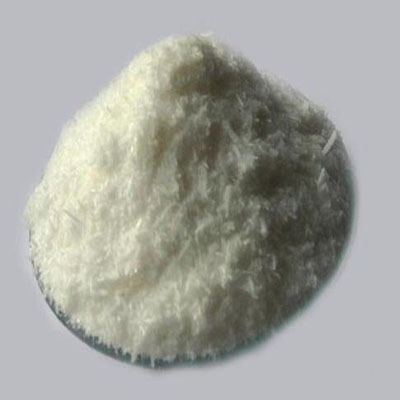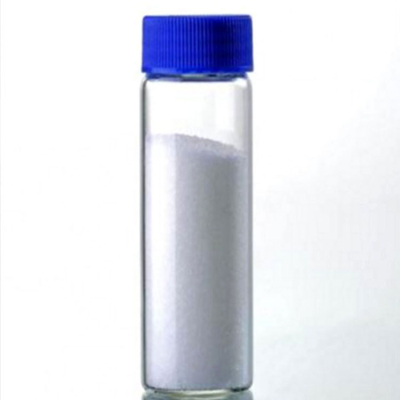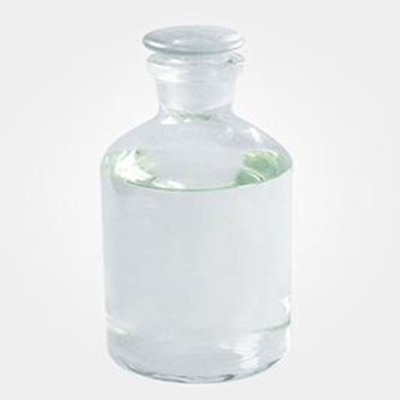4-Chloro-3-methylphenol CAS#59-50-7
4-Chloro-3-methylphenol CAS#59-50-7 Promotion Season Now in Store and Free Sample for Testing with Factory Price
Chemical Name:4-Chloro-3-methylphenol
CAS No.:59-50-7
Molecular Formula: C7H7ClO
Molecular weight: 142.58
Sample: Available
Mode of Transportation
1. By Air, fast but expensive.
2. By Sea, usual and economy.
3. By Train, suit for middle Asia countries.
4. By Express, suit for small package.
We only provide highest quality goods available, accompanied by after support!
Products Description of 4-Chloro-3-methylphenol CAS#59-50-7
Colorless crystal. The melting point is 66°C (55.5°C), the boiling point is 235°C, 1g can be dissolved in 250ml of water at 20°C, more dissolved in hot water, and easily soluble in benzene, ether, ethanol, acetone, chloroform and petroleum ether. Can evaporate with water vapor. Used in organic synthesis, such as dyes, film preservatives, etc. Used as pharmaceutical preservative
1. Names and Identifiers
Name | 4-Chloro-3-methylphenol
|
Synonyms
| 3-methyl-4-chlorophenol 4-chloro-1-hydroxy-3-methylbenzene 4-chloro-3-methyl phenol 4-chloro-3-methylphenol(p-chlorocresol) 4-chloro-m-creso 4-chlorometa-cresol 4-mpd Candaseptic EINECS 200-431-6 PARA CHLORO META CRESOL p-Chlorocresol PCMC Phenol,4-chloro-3-methyl
|
CAS
| No.59-50-7
|
CID | 1732 |
EINECS(EC#) | 200-431-6
|
Molecular Formula | C7H7ClO (isomer)
|
Inchi | InChI=1S/C7H7ClO/c1-5-4-6(9)2-3-7(5)8/h2-4,9H,1H3
|
InChIkey
| CFKMVGJGLGKFKI-UHFFFAOYSA-N
|
Canonical Smiles
| CC1=C(C=CC(=C1)O)Cl
|
Isomers Smiles
| CC1=C(C=CC(=C1)O)Cl
|
2.Properties
Density
| 1.37 |
Melting point
| 63-65℃
|
Boiling point | 151° F (NTP, 1992) |
Refractive index | 1.5403 (73 C)
|
Flash Point
| 230° F (NTP, 1992)
|
Vapour Pressure
| 0.0±0.4 mmHg at 25°C |
Precise Quality
| 142.018539
|
PSA
| 20.23000
|
logP
| 2.35400
|
Solubility | methanol: soluble1g/10 mL, clear, colorless |
AnalyticLaboratory Methods | Method: EPA-EAD 604; Procedure: gas chromatography with flame ionization detector/electron capture detector; Analyte: 3-methyl-4-chlorophenol;; Matrix: water;; Detection Level: 0.36 ug/L.
|
Appearance
| Off white crystals |
AutoIgnition | 590°C
|
Storage | Ambient temperatures.
|
Chemical Properties | white or pink crystals
|
Physical Properties
| Colorless, white, or pinkish crystals with a slight phenolic odor. On exposure to air it slowlybecomes light brown.
|
Color/Form
| White
|
Contact Allergens
| Chlorocresol is a biocide used for its disinfectant andpreservative properties, in topicals or cutting fluid.
|
Decomposition
| When heated to decomposition it emits toxic fumes of phosgene; /and hydrogen chloride;/.
|
Odor | Said to be odorless when very pure, but usually a phenolic odor persists
|
Odor Threshold
| detection: 0.1 mg/kg
|
PH
| pH = 5.6 in saturated aqueous solution |
Physical
| CHLOROCRESOL; is a pinkish to white crystalline solid with a phenolic odor. Melting point 64-66°C. Shipped as a solid or in a liquid carrier. Soluble in aqueous base. Toxic by ingestion, inhalation or skin absorption. Used as an external germicide. Used as a preservative in paints and inks.
|
pKa
| pKa 9.55(t = 25) (Uncertain)
|
Water Solubility
| 4 g/L (20 oC)
|
Spectral Properties | Intense mass spectral peaks: 142 m/z (100%), 107 m/z (80%), 144 m/z (32%), 77 m/z (24%)
|
Stability | Stable. Incompatible with brass, oxidizing agents, copper, copper alloys.
|
StorageTemp
| Store below +30°C. |
3. Use and Manufacturing
3.2 Methods of Manufacturing
... Prepared by chlorination of 3-methylphenol; with, e.g., SO2Cl2
3.3 Potential Exposure
Chlorinated phenol fungicide, microbiocide, and germicide used to control bacteria, yeasts, andfungi.
3.4 Produe Method
Chlorocresol is prepared by the chlorination of m-cresol.
3.5 Purification Methods
Crystallise the phenol from pet ether or *C6H6. [Beilstein 6 H 381, 6 I 187, 6 II 355, 6 III 1315, 6 IV 2064.]
3.6 Shipping
UN2669 Chlorocresols solution, Hazard Class:6.1; Labels: 6.1-Poisonous materials. UN3437 Chlorocresolssolid, Hazard Class: 6.1; Labels: 6.1-Poisonous materials.
3.7 Usage
P-chloro-m-cresol is used as a preservative in a wide number of topical preparations and is a rare cause of allergic contact dermatitis and CoU, the mechanism of which remains uncertain.
3.8 Waste Disposal
A good candidate for rotarykiln incineration at a temperature range of 820 to 1600Cand residence times of seconds for liquids and gases, andhours for solids.
4. Safety and Handling
4.1 Symbol
GHS05, GHS07, GHS09
4.1 Hazard Codes
Xn
4.1 Signal Word
Danger
4.1 Risk Statements
R21/22;R41;R43;R50
4.1 Safety Statements
S26;S36/37/39;S61
4.1 Packing Group
II
4.1 Octanol/Water Partition Coefficient
log Kow = 3.10
4.2 Fire Hazard
Combustible material: may burn but does not ignite readily. Containers may explode when heated. Runoff may pollute waterways. Substance may be transported in a molten form.
4.3 Other Preventative Measures
Wash contaminated areas of skin with concentrated soap solution without delay. Contaminated gloves, clothing, shoes should be immediately removed and disposed of in an incinerator. /4-Chlorophenol/
SRP: Contaminated protective clothing should be segregated in such a manner so that there is no direct personal contact by personnel who handle, dispose, or clean the clothing. Quality assurance to ascertain the completeness of the cleaning procedures should be implemented before the decontaminated protective clothing is returned for reuse by the workers.
4.4 Hazard Class
6.1(a)
4.4 Hazard Declaration
H302 + H312-H317-H318-H400
4.4 Cleanup Methods
Activated carbon is a good method for removing chlorophenols from water. Competitive adsorption occurs between chlorophenols and humic substances present in nearly all municipal water supplies. This competition decreases the capacity of carbon for chlorophenols. /Chlorophenols/
4.5 DisposalMethods
Generators of waste (equal to or greater than 100 kg/mo) containing this contaminant, EPA hazardous waste number U039, must conform with USEPA regulations in storage, transportation, treatment and disposal of waste.
A good candidate for rotary kiln incineration at a temperature range of 820 to 1,600 deg C and residence times of seconds for liquids and gases, and hours for solids.
A pilot plant study was conducted to evaluate the fate and behavior of 22 toxic organic compounds in conventional activated sludge wastewater treatment plants. The organic cmpd, 3-methyl-4-chlorophenol, spiked at a nominal concn of 50 ug/l was about 95-98% removable. Results showed that biodegradability was variable & was a function of molecular structure.
4.6 DOT Emergency Guidelines
/GUIDE 152: SUBSTANCES - TOXIC (COMBUSTIBLE)/ Health: Highly toxic, may be fatal if inhaled, swallowed or absorbed through skin. Contact with molten substance may cause severe burns to skin and eyes. Avoid any skin contact. Effects of contact or inhalation may be delayed. Fire may produce irritating, corrosive and/or toxic gases. Runoff from fire control or dilution water may be corrosive and/or toxic and cause pollution. /Chlorocresols; Chlorocresols, liquid; Chlorocresols, solid; Chlorocresols, solution/
/GUIDE 152: SUBSTANCES - TOXIC (COMBUSTIBLE)/ Fire or Explosion: Combustible material: may burn but does not ignite readily. Containers may explode when heated. Runoff may pollute waterways. Substance may be transported in a molten form. /Chlorocresols; Chlorocresols, liquid; Chlorocresols, solid; Chlorocresols, solution/
/GUIDE 152: SUBSTANCES - TOXIC (COMBUSTIBLE)/ Public Safety: CALL Emergency Response Telephone Number ... . As an immediate precautionary measure, isolate spill or leak area in all directions for at least 50 meters (150 feet) for liquids and at least 25 meters (75 feet) for solids. Keep unauthorized personnel away. Stay upwind. Keep out of low areas. /Chlorocresols; Chlorocresols, liquid; Chlorocresols, solid; Chlorocresols, solution/
/GUIDE 152: SUBSTANCES - TOXIC (COMBUSTIBLE)/ Protective Clothing: Wear positive pressure self-contained breathing apparatus (SCBA). Wear chemical protective clothing that is specifically recommended by the manufacturer. It may provide little or no thermal protection. Structural firefighters' protective clothing provides limited protection in fire situations ONLY; it is not effective in spill situations where direct contact with the substance is possible. /Chlorocresols; Chlorocresols, liquid; Chlorocresols, solid; Chlorocresols, solution/
/GUIDE 152: SUBSTANCES - TOXIC (COMBUSTIBLE)/ Evacuation: ... Fire: If tank, rail car or tank truck is involved in a fire, ISOLATE for 800 meters (1/2 mile) in all directions; also, consider initial evacuation for 800 meters (1/2 mile) in all directions. /Chlorocresols; Chlorocresols, liquid; Chlorocresols, solid; Chlorocresols, solution/
/GUIDE 152: SUBSTANCES - TOXIC (COMBUSTIBLE)/ Fire: Small fires: Dry chemical, CO2 or water spray. Large fires: Water spray, fog or regular foam. Move containers from fire area if you can do it without risk. Dike fire control water for later disposal; do not scatter the material. Use water spray; do not use straight streams. Fire involving tanks or car/trailer loads: Fight fire from maximum distance or use unmanned hose holders or monitor nozzles. Do not get water inside containers. Cool containers with flooding quantities of water until well after fire is out. Withdraw immediately in case of rising sound from venting safety devices or discoloration of tank. ALWAYS stay away from tanks engulfed in fire. For massive fire, use unmanned hose holders or monitor nozzles; if this is impossible, withdraw from area and let fire burn. /Chlorocresols; Chlorocresols, liquid; Chlorocresols, solid; Chlorocresols, solution/
/GUIDE 152: SUBSTANCES - TOXIC (COMBUSTIBLE)/ Spill or Leak: ELIMINATE all ignition sources (no smoking, flares, sparks or flames in immediate area). Do not touch damaged containers or spilled material unless wearing appropriate protective clothing. Stop leak if you can do it without risk. Prevent entry into waterways, sewers, basements or confined areas. Cover with plastic sheet to prevent spreading . Absorb or cover with dry earth, sand or other non-combustible material and transfer to containers. DO NOT GET WATER INSIDE CONTAINERS. /Chlorocresols; Chlorocresols, liquid; Chlorocresols, solid; Chlorocresols, solution/
/GUIDE 152: SUBSTANCES - TOXIC (COMBUSTIBLE)/ First Aid: Move victim to fresh air. Call 911 or emergency medical service. Give artificial respiration if victim is not breathing. Do not use mouth-to-mouth method if victim ingested or inhaled the substance; give artificial respiration with the aid of a pocket mask equipped with a one-way valve or other proper respiratory medical device. Administer oxygen if breathing is difficult. Remove and isolate contaminated clothing and shoes. In case of contact with substance, immediately flush skin or eyes with running water for at least 20 minutes. For minor skin contact, avoid spreading material on unaffected skin. Keep victim warm and quiet. Effects of exposure (inhalation, ingestion or skin contact) to substance may be delayed. Ensure that medical personnel are aware of the material(s) involved and take precautions to protect themselves. /Chlorocresols; Chlorocresols, liquid; Chlorocresols, solid; Chlorocresols, solution/
Product Application of 4-Chloro-3-methylphenol CAS#59-50-7
4-Chloro-3-cresol is a phenolic derivative that can be used as a preservative and disinfectant.
4-Chloro-3-cresol is a rianodine receptor activator.
Used in organic synthesis, such as dyes, film preservatives, etc.
Used as pharmaceutical preservative
Factory and Equipment Show
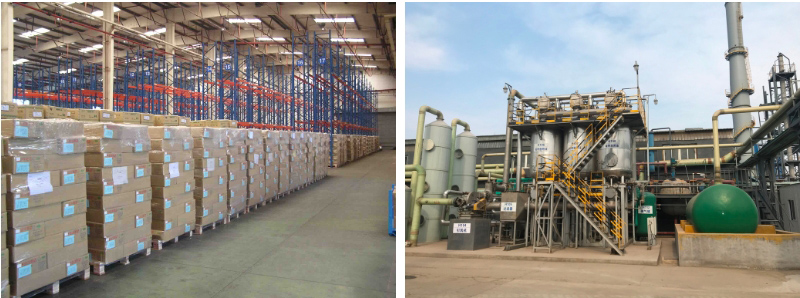

Fast delivery time
Inventory 2-3 working days New production 7-10 working days

FAQ
Q1: Can I get some samples?
A: Yes, we can supply you with the free sample.
Q2: How to start orders or make payments?
A: Proforma invoice will be sent firstly after confirmation of order, enclosed our bank information. Payment by T/T, Western Union and so on…
Q3: How to confirm the Product Quality before placing orders?
A: You can get free samples for some products, you only need to pay the shipping cost or arrange a courier to us and take the samples. You can send us your product specifications and requests, we will manufacture the products according to your requests. You also could send samples for us to testing.
Q4: What’s your MOQ?
A: Different products with different MOQ, but we accept your any requests of the quantity.
Q5: How about delivery lead time?
A: Inventory 2-3 working days, new production 7-10 working days after payment confirmed. (Chinese holiday not included)
Q6: Is there a discount?
A: Yes, we can give you the most competitive price than any other official quote.
Q7: How to contact us?
A: You can chat with us online or by WhatsApp +86-188-6575-9396.
You can also choose your interested products then send inquiry to us by e-mail inquiry@sincerechemical.com, or call us directly.
Then you will get reply from us within 24 hours.


